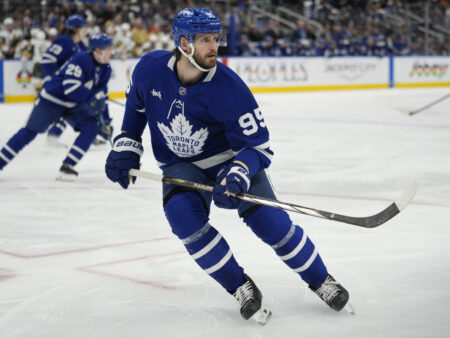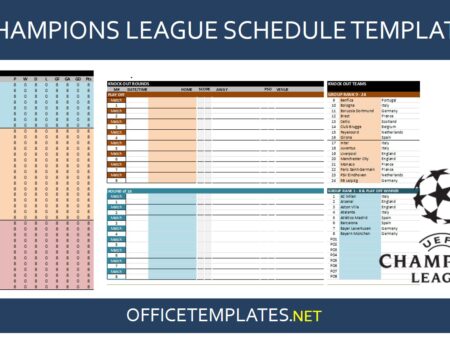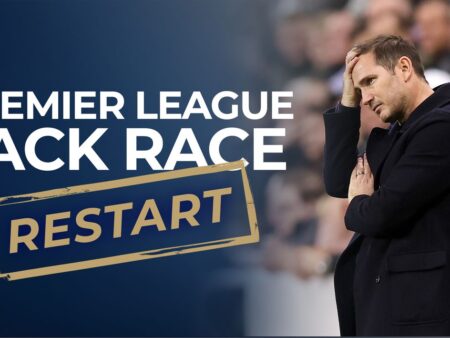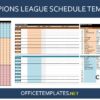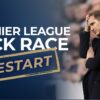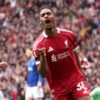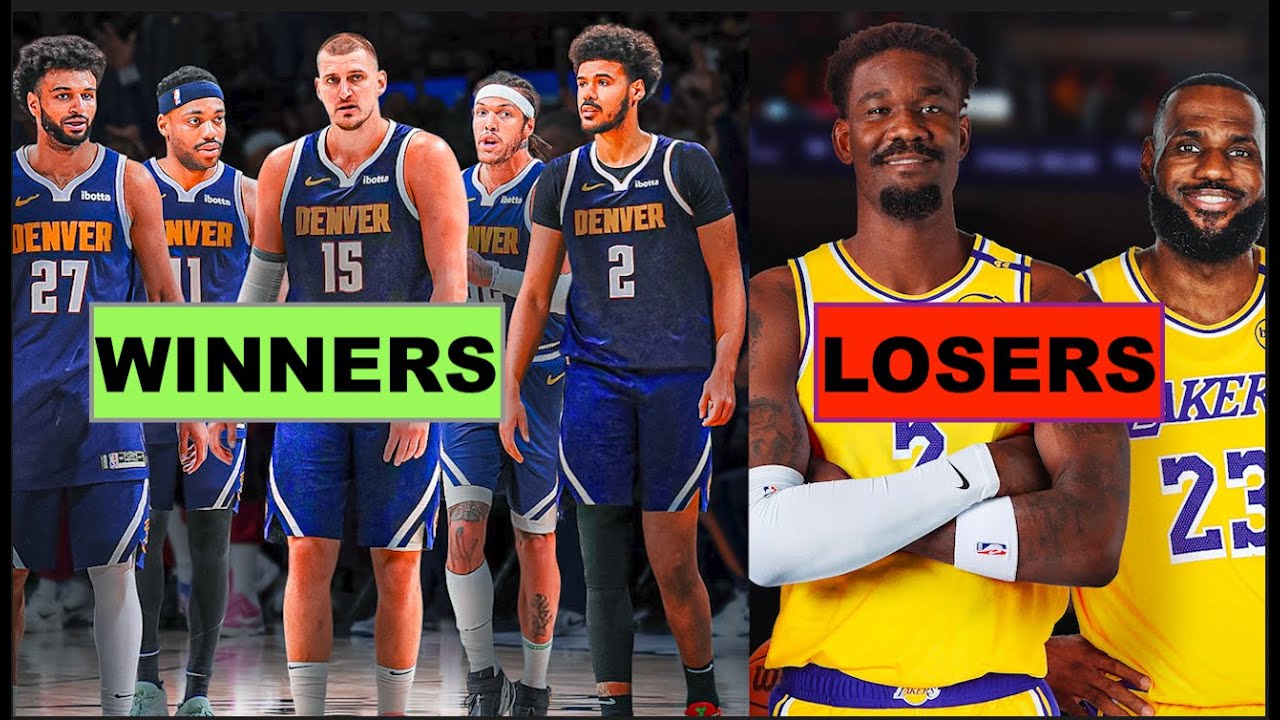
The initial phase of NBA free agency has largely focused on a player who wasn`t even available.
LeBron James is not a free agent; he deliberately chose not to be one.
“We understand the difficulty in competing for a championship now while also preparing for the future. We truly want to assess what is optimal for LeBron at this juncture in his life and career,” Klutch Sports CEO Rich Paul stated to ESPN`s Shams Charania.
So, what direction might James and the Los Angeles Lakers take this summer? We`ll examine the latest developments regarding L.A.`s situation, alongside other significant news from around the league following the first few days of free agency.
What is the current situation with LeBron and the Lakers?
After prioritizing Jake LaRavia in free agency – a player who reportedly generated a minor bidding war among several teams, according to sources – the Lakers were left with approximately $8 million from their midlevel exception and observed center options like Brook Lopez and Clint Capela signing elsewhere.
Sources indicated that teams with available centers were quoting high prices to the Lakers when contacted, influenced by the value L.A. had previously shown willingness to pay for Mark Williams (in the February trade that was later rescinded). To refresh your memory, that proposed package included:
- A young player (2024 first-round pick Dalton Knecht)
- L.A.`s unprotected first-round pick in 2031
- L.A.`s unprotected pick swap in 2030
This demonstrated the Lakers` urgency to acquire a center to complement Luka Doncic. Five months later, the Lakers still lacked one, until they reached an agreement to sign Deandre Ayton on Wednesday, after he cleared waivers following his somewhat unexpected buyout from the Portland Trail Blazers.
Ayton is certainly not without flaws; his waiver by Portland despite a max contract indicates issues. However, the 2018 No. 1 overall pick possesses talent and is arguably the second-best center available this summer after Myles Turner. Sources suggested Ayton could be a beneficial addition for the Lakers and, at minimum, represents a notable upgrade over last year`s player in that role, Jaxson Hayes, whom the Lakers reportedly agreed to re-sign as Ayton`s backup on Thursday evening.
Nevertheless, all these roster moves will be secondary as the league awaits the next indicator of James` intentions – something that hasn`t been publicly clarified since Paul`s cryptic remarks to ESPN`s Charania.
Superficially, the entire situation appears to be a peculiar series of passive-aggressive actions. James could have become a free agent by opting out of the final year of his contract, a move one executive noted would have truly ignited a frenzied situation.
Instead, James chose to secure his salary and, significantly, retain his no-trade clause. This decision seemingly implied his expectation to play his eighth season in a Lakers uniform.
Paul`s statement, however, left considerable room for interpretation. Since then, there has been public silence from all parties involved – James, Paul, and anyone associated with the Lakers, including general manager Rob Pelinka, coach JJ Redick, governor Jeanie Buss, or Mark Walter, who recently acquired ownership control by paying several billion dollars.
Even the Lakers` lack of a formal announcement confirming the option pickup, particularly given James` status as one of history`s greatest players, conveyed its own unspoken message.
So, what happens next?
This is a major topic of discussion across the league. While a trade isn`t impossible – nothing is truly impossible in the NBA after the Doncic trade – it is highly improbable due to James` substantial salary and his no-trade clause.
Sources reported that a few curious teams made inquiries simply to gauge the seriousness of the situation. For now, no active trade discussions are occurring. However, the situation is certainly being monitored.
The concept of buying out James` contract – even if he were to forgo a portion of his salary – also lacks logical grounding. This is unlike the situation the Milwaukee Bucks faced with Damian Lillard, a future Hall of Famer sidelined by a torn Achilles. James was a second-team All-NBA selection last season for the Western Conference`s third seed, performing effectively even with a less-than-fully healthy Doncic. What strategic benefit would the Lakers gain by simply letting James depart?
In a league well-acquainted with unusual circumstances, few in recent memory rival this one. But until James or the Lakers definitively rule out the possibility of him playing elsewhere next season, speculation will persist.
How much did Denver improve?
It`s been a busy period for the Nuggets and their new executive team, led by Ben Tenzer and Jon Wallace.
The Nuggets executed one of the summer`s more significant trades, sending Michael Porter Jr. and their unprotected 2032 first-round pick to the Brooklyn Nets for Cam Johnson. They also traded Dario Saric for Jonas Valanciunas and signed Tim Hardaway Jr. and former Nugget Bruce Brown to bolster their bench.
The Porter-Johnson deal reduced Denver`s payroll by $34 million over the next two seasons and moved them out of the luxury tax for the upcoming season, where they were projected to be in the penal repeater tier. This marked their most active offseason since 2022, the summer preceding their championship win, when they acquired Kentavious Caldwell-Pope and initially signed Bruce Brown.
“That was a valuable asset they traded,” one general manager commented to ESPN regarding Denver`s 2032 pick. “Teams were watching to see if they would actually use it.”
“I understand Cam Johnson has had some past health issues, but considering Porter`s back and knee problems, this move makes sense to me,” said another league executive. “I believe Cam and Jokic will connect effectively on the court. They approach the game similarly.”
Significant veteran talent has been added to strengthen the bench, a need that former coach Michael Malone frequently highlighted, often finding himself pushed by former Nuggets GM Calvin Booth to instead develop young draft picks.
“They`ve addressed shooting. Jonas is a suitable backup, THJ is a good backup option, Bruce is a promising reclamation project,” a scout observed. “Calvin got overly clever and stuck to it. They didn`t need more than this. It`s primarily about supporting Jokic.”
However, opinions varied on whether the Nuggets are genuinely closer to another championship, despite seemingly addressing their main weaknesses. As one rival GM put it, “There`s only one person whose approval matters for their offseason. That`s Jokic. Sometimes the most effective trades you make are the ones that energize your superstar. If Jokic is motivated by these moves, then it was a successful summer.”
A potential complication to Denver`s plans is the possibility of Valanciunas returning to Europe next season, following a report from BasketNews suggesting he is considering joining Greek team Panathinaikos.
Several steps would need to occur first: Denver would likely need to waive him and presumably buy out his $10 million contract. The NBA would then need to grant Valanciunas a letter of clearance.
This is not unprecedented. Last year, for instance, Sasha Vezenkov agreed to a buyout with the Toronto Raptors to return to Europe. But unlike Vezenkov – a minor contributor on a lottery team – Valanciunas was just acquired, presumably to fulfill a critical need for a team contending for a championship. Therefore, it is far from certain that the Nuggets would agree to facilitate this move.
After injuries and offseason changes, what does the Eastern Conference look like now?
At the beginning of the playoffs, the Boston Celtics were widely considered the favorites to reach the NBA Finals again. Then, by the start of Game 7 of those Finals, the Indiana Pacers not only had a chance to win their first title but were already viewed as conference favorites for the next season after an impressive run through the East playoffs.
However, Achilles tendon tears sustained by two Olympic gold medalists – Celtics forward Jayson Tatum and Pacers guard Tyrese Haliburton – have significantly disrupted the Eastern Conference picture. Or, as one assistant coach commented, “It`s the most unpredictable it`s been – again.”
Given the considerable uncertainty across the conference, we conducted an informal survey of eight scouts and executives to get their perspective.
What is clear is that the East is currently seen as having three distinct tiers: The Cleveland Cavaliers and New York Knicks occupy the top tier; the Atlanta Hawks and Orlando Magic are in the next; and a more muddled group follows. The fact that Philadelphia received three votes is a reminder that if the 76ers can assemble their full roster, they might possess the highest potential ceiling of any team in the East. However, the likelihood of reaching that potential is diminished by the injury histories of Joel Embiid and Paul George, and the overall difficult 2024-25 season Philadelphia endured. Notably, Boston, Indiana, and the Miami Heat – teams that collectively accounted for seven of the last eight conference finals appearances – received zero votes for a top-four finish.
“One of the things you learn working in this league is how delicate everything is, even for the best teams with seemingly invincible star players,” remarked one East GM.
“These recent months have really underscored that reality.”
The middle tier of players has fared exceptionally well
As the 2025 free agency period has unfolded, there has been criticism – notably from Golden State Warriors star Draymond Green – suggesting that the collective bargaining agreement (CBA) is negatively impacting players and disproportionately benefiting the league.
“Even before the agreement was signed, [I said] this is absurd,” Green stated on his podcast recently. “It will ultimately harm the players. Nobody wanted to listen, and everyone acted as if the [National Basketball Players Association] was securing a fantastic deal… Every year, the revenue pool grows, the business improves, and players get disadvantaged more. That`s just the nature of this business.”
However, what is undeniably true is that in an offseason where only the Brooklyn Nets initially had significant cap space – before the Bucks cleared room to acquire Myles Turner – a considerable number of players in the so-called “middle class” have secured lucrative contracts.
Players like Nickeil Alexander-Walker, Dennis Schroder, Dorian Finney-Smith, Caris LeVert, Duncan Robinson, Luke Kornet, and Luke Kennard all switched teams on deals valued at eight figures annually. Several other players – including Brook Lopez, Clint Capela, Kevon Looney, Ty Jerome, Ayton, LaRavia, Guerschon Yabusele, and Tyus Jones – signed for at least the taxpayer`s midlevel exception of $5.7 million. Furthermore, many others – such as Naz Reid, Santi Aldama, Sam Merrill, Davion Mitchell, Tre Jones, Tre Mann, and Jaylin Williams – received substantial midrange deals to remain with their current teams.
A frequent concern under the new CBA has been that lower-level players would be squeezed out of the market. This summer, however, has demonstrated that even in a year with limited cap space, these players are doing quite well.
“The middle class is certainly thriving,” commented one executive.
The CBA`s second apron is achieving its goal
The new CBA, particularly the introduction of the restrictive second apron, has profoundly influenced team roster construction. This offseason alone, the Phoenix Suns and Boston Celtics successfully moved below the second apron, and currently, only the Cleveland Cavaliers are projected to remain above it heading into the 2025-26 season.
Historical data indicates that teams rarely sustain operations in that highest salary tier.
Since the start of the 2013-14 season, when new repeater tax penalties were implemented, 37 teams have finished a season sufficiently above the salary cap to meet the threshold for spending into the second apron (roughly 134% of the cap).
In the first six years of that period – leading up to the COVID-affected 2019-20 season – there were 14 such teams, with a maximum of three in any single season. However, since the league concluded its season in the Orlando bubble, 23 teams have operated above that threshold, including 17 teams in the three-year span from 2021-22 through 2023-24 alone. The primary reason for this surge was the salary cap flattening over several years due to the pandemic`s aftereffects.
Last year, the number of teams above the second apron dropped back to three: Minnesota, Phoenix, and Boston. As the salary cap is expected to resume regular increases, the enhanced flexibility for middle-tier teams with lower salary structures will start to play a more significant role than it has in the past few years when the market was constrained by minimal cap space.
“This CBA is excellent for the NBA,” one executive stated, “because it emphasizes sound management and strong leadership. Without those, you`ll quickly find yourself with a struggling team.”
